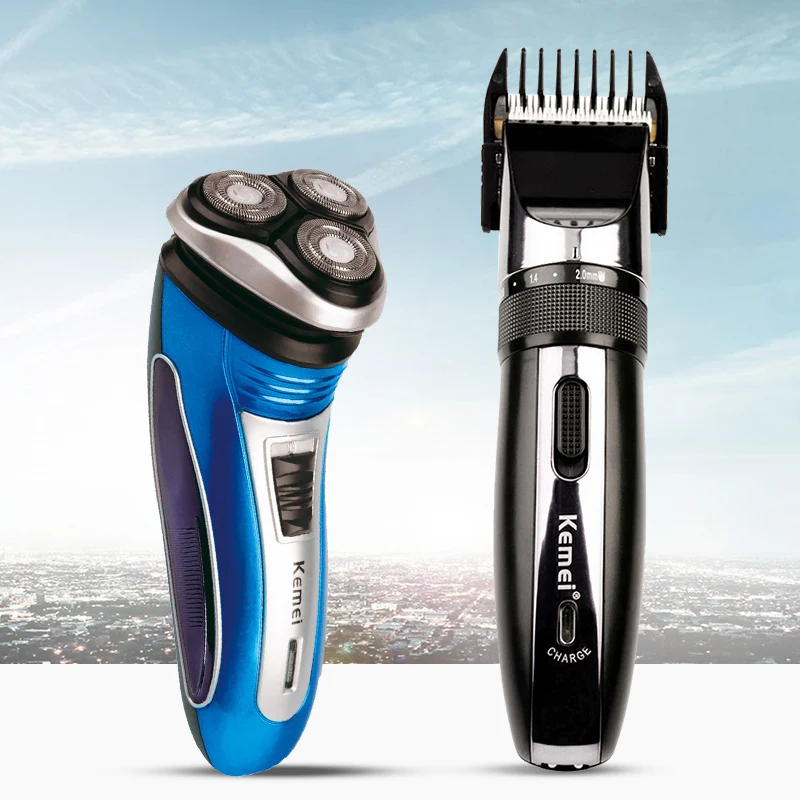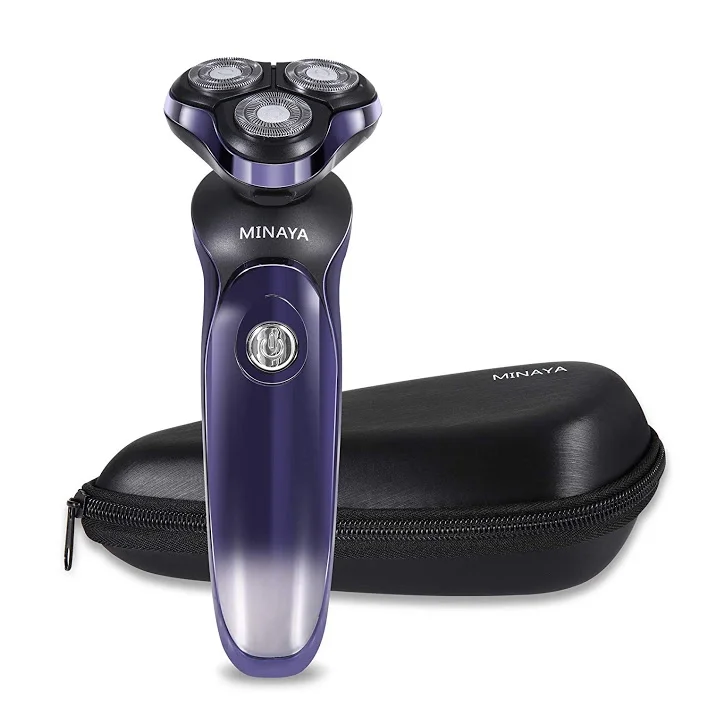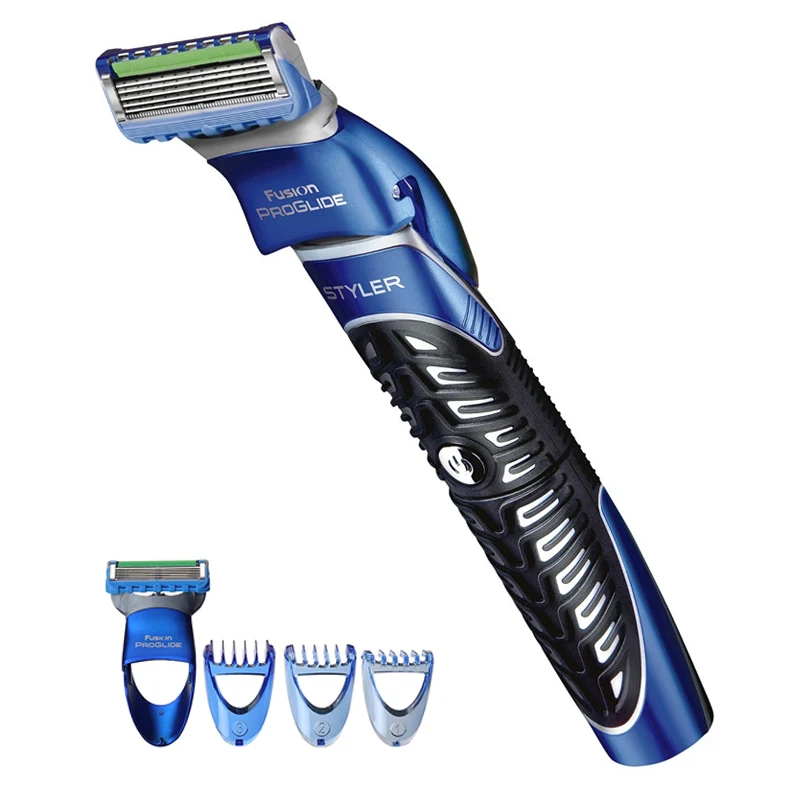Choosing the right shaving tool is essential for achieving a smooth and comfortable shave. When it comes to deciding between a razor blade and an electric shaver, numerous factors come into play. This article delves deep into the razor blade vs electric shaver debate, exploring various aspects to help you make an informed decision.
Shaving Quality
Closeness of the Shave
One of the primary considerations in the razor blade vs electric shaver discussion is the closeness of the shave. Razor blades, especially multi-blade cartridges, are renowned for providing a exceptionally close shave. This is because the blades cut the hair at the skin level, leaving minimal stubble.
Electric shavers, on the other hand, use oscillating or rotating blades behind a foil or mesh. While they offer a close shave, it might not be as precise as a traditional razor. However, modern electric shavers have significantly improved, providing results that are nearly comparable to razor blades.
Skin Irritation and Comfort
Skin irritation is a common concern for many who shave regularly. Razor blades can cause nicks, cuts, and irritation, especially for those with sensitive skin or those who shave frequently. Proper technique and high-quality blades can mitigate some of these issues, but the risk remains.
Electric shavers are generally gentler on the skin. The design typically prevents the blades from coming into direct contact with the skin, reducing the likelihood of cuts and irritation. For individuals prone to razor burn or sensitive skin, electric shavers might be the preferable option.
Convenience and Ease of Use
Portability and Travel-Friendliness
When comparing razor blade vs electric shaver, portability is an important factor. Razor blades are lightweight and easy to carry, making them ideal for travel. They don’t require batteries or charging, allowing for hassle-free use anywhere.
Electric shavers vary in portability. While many modern electric shavers are designed to be compact and travel-friendly, they often require a power source. Some models offer cordless operation and come with travel cases, but they still necessitate regular charging, which can be inconvenient during extended trips.
Maintenance and Cleaning
Maintenance plays a crucial role in the longevity and performance of either shaving tool. Razor blades require regular replacement to maintain their effectiveness. Additionally, after each shave, the blades need to be cleaned and dried to prevent rusting and ensure hygiene.
Electric shavers also require regular maintenance, including cleaning the shaving head, replacing parts like blades and foils periodically, and ensuring that the device remains free from debris. Some electric shavers come with cleaning stations, which can simplify the maintenance process, but this adds to the overall cost.
Cost Factors
Initial Investment
When evaluating razor blade vs electric shaver, the initial cost is a significant consideration. Razor blades are relatively inexpensive to purchase upfront. A basic razor can be bought for a low price, making it an accessible option for many.
Electric shavers, in contrast, generally require a higher initial investment. Quality electric shavers can range from moderate to high prices, depending on the features and brand. This upfront cost might be a deterrent for some, but it’s important to consider long-term benefits and potential savings.
Ongoing Expenses
The ongoing costs associated with each option are also worth examining. Razor blades need to be replaced regularly, adding to the long-term expense. The frequency of replacement depends on usage, but over time, these costs can accumulate.
Electric shavers have their own recurring expenses, such as replacement parts and occasionally buying new units after a few years of use. However, many users find that the higher upfront cost of an electric shaver is offset by the lower ongoing expenses compared to constantly purchasing razor blades.
Time Efficiency
Speed of Shaving
Time efficiency is an important factor for many individuals with busy schedules. In the razor blade vs electric shaver comparison, razor blades typically provide a faster shave. The simplicity of the tool allows for quick maneuvering and immediate results without the need for extensive setup.
Electric shavers might take slightly longer, especially those with multiple settings or attachments. However, advancements in technology have made modern electric shavers faster and more efficient, often closing the time gap between the two options.
Preparation and Aftercare
Preparation and aftercare can also impact the overall time spent on shaving. Using a razor often requires additional steps such as applying shaving cream or gel and potentially using an aftershave product to soothe the skin. These steps, while enhancing the shave, add to the total time.
Electric shavers usually require minimal preparation. Many models can be used dry or with a little pre-shave lotion, reducing the time needed for both preparation and post-shave care. This streamlined process can be a significant advantage for those seeking a quick and efficient shave.
Safety Features
Risk of Cuts and Nicks
The safety aspect is paramount in the razor blade vs electric shaver debate. Razor blades, being sharp and directly exposed, pose a higher risk of cuts, nicks, and accidental injuries to the skin. Proper technique and careful handling are essential to minimize these risks.
Electric shavers are generally safer, as the blades are often concealed behind protective foils or guards. This design reduces the likelihood of accidental cuts and makes them a safer choice for those who are less experienced with shaving or have sensitive skin.
Built-in Safety Mechanisms
Electric shavers often come with built-in safety features such as adjustable speed settings, pivoting heads, and skin protection technologies. These features not only enhance the safety of the shave but also improve the overall user experience.
Razor blades lack these advanced safety mechanisms, relying solely on the user’s skill and caution to prevent accidents. While this simplicity can be advantageous for those who prefer traditional tools, it places more responsibility on the individual to ensure a safe shave.
Versatility and Features
Styling and Precision
When it comes to versatility, electric shavers often offer more options than razor blades. Many electric models come with attachments and accessories that allow for precise styling, including trimming sideburns, shaping beards, and even nose hair trimming.
Razor blades are primarily designed for a clean shave and lack the versatility offered by electric shavers. While some razors come with adjustable heads to accommodate different angles, they do not provide the same level of multifaceted grooming options.
Wet and Dry Shaving Capabilities
Modern electric shavers offer the flexibility of both wet and dry shaving. This means users can choose to shave with water, shaving cream, or even shower, providing a more comfortable and customizable experience.
Razor blades are inherently designed for wet shaving, requiring water and shaving cream or gel to achieve an optimal shave. This limitation can be a drawback for those who prefer the convenience of dry shaving or need to shave on the go without access to water.
Longevity and Durability
Lifespan of the Tools
Durability is another important factor in the razor blade vs electric shaver comparison. Razor blades have a limited lifespan, typically requiring replacement after several shaves to maintain effectiveness and prevent irritation.
Electric shavers, especially high-quality models, are built to last for several years with proper maintenance. Their longevity can justify the higher initial cost, as they do not need to be replaced as frequently as razor blades. This durability makes electric shavers a more long-term investment for many users.
Maintenance Requirements
The longevity of both shaving tools is closely tied to their maintenance requirements. Razor blades are relatively low-maintenance, requiring simple cleaning and periodic replacement. However, neglecting maintenance can lead to quicker dulling and reduced performance.
Electric shavers require more comprehensive maintenance to ensure their longevity. This includes regular cleaning, lubrication of moving parts, and timely replacement of consumable components. While this can be time-consuming, proper maintenance is crucial for extending the lifespan of an electric shaver.
User Preferences and Habits
Shaving Frequency
The choice between a razor blade and an electric shaver can also depend on how frequently one shaves. Those who shave daily or multiple times a day may find electric shavers more convenient and less irritating to the skin, as they are designed for frequent use without the need for blade replacement each time.
Individuals who shave less frequently or prefer a traditional shaving routine might opt for razor blades, appreciating the closeness of the shave and the ritualistic aspect of using a manual razor.
Learning Curve and Technique
Using a razor blade effectively requires a certain level of skill and technique to avoid cuts and achieve a smooth shave. There is a learning curve associated with mastering the proper angles, pressure, and movements.
Electric shavers are generally easier to use, with most models designed for a straightforward shaving process. The automated motion of the blades minimizes the need for precise technique, making electric shavers a suitable option for beginners or those who prefer a more effortless shaving experience.
Technological Advancements
Innovations in Electric Shavers
Electric shavers have benefited from numerous technological advancements, enhancing their performance and user experience. Features such as flexible heads, improved blade materials, and advanced battery technology have made modern electric shavers more efficient and comfortable.
Additionally, some electric shavers come with smart features like LCD displays, automated cleaning systems, and connectivity with mobile apps for maintenance reminders. These innovations continue to bridge the gap between the traditional razor blade and the electric shaver, offering users more advanced options.
Enhancements in Razor Blade Design
While razor blades are more traditional, there have been innovations aimed at improving their performance and reducing irritation. Multi-blade systems, pivoting heads, and lubrication strips are some of the enhancements that have made razor blades more effective and comfortable.
Subscription services for razor blades have also become popular, providing users with regular deliveries of fresh blades and making it easier to maintain a consistent shaving routine. These developments ensure that razor blades remain a competitive option in the shaving market.
 Conclusion
Conclusion
In the ongoing razor blade vs electric shaver debate, the best choice ultimately depends on individual preferences, skin type, lifestyle, and environmental considerations. Razor blades offer an unparalleled closeness and simplicity, making them ideal for those who prefer traditional shaving methods and a highly precise shave. Conversely, electric shavers provide convenience, safety, and versatility, catering to individuals seeking a quick, comfortable, and low-maintenance shaving solution.
By understanding the strengths and limitations of each option, you can make an informed decision that aligns with your personal needs and preferences. Whether you prioritize the closeness of the shave, ease of use, or environmental sustainability, both razor blades and electric shavers have their unique advantages to offer.



